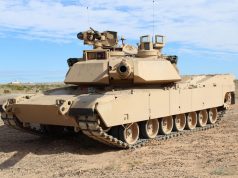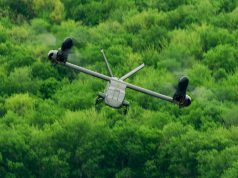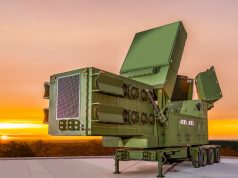
US Army soldiers recently integrated a robotic combat vehicle (RCV) surrogate into the opposing force for the first such training event ever.
The milestone exercise took place during a recent rotation at the Joint Readiness Training Center at Fort Polk, Louisiana, in September.
This event enabled the Army to gain insight in how best to utilize unmanned ground vehicles in combat and furthered its ongoing campaign of learning around RCV development.
During the exercise, soldiers from the 1st Battalion (Airborne), 509th Infantry, known as Geronimo, used two Project Origin vehicles (RCV surrogates) in a simulated battle with the 3/101st (Air Assault).
The Origin vehicles are an Army Development Command (DEVCOM) Ground Vehicle Systems Center (GVSC) prototyping effort and provides the Army with the ability to conduct rapid technology and autonomous behavior integration that soldiers assess during multiple touchpoints each year.
The service has already completed the first missile firings with the RCVs earlier this year.
While on-site engineers and technicians collected technical data, the soldiers in the field further validated the combat benefits of adding robots to a manned-unmanned teamed formation and identified new capabilities desired for the next Project Origin Soldier operational experiment.
“With these units, the human survivability rate increases significantly,” explained Sergeant First Class Eugene Lackey (Pathfinder Company). “This system allowed us to close with and destroy the enemy safely from a distance. It [also enabled] us to the find the enemy before he could find us. It is a great tool and I wish we could have it for little bit longer to really see how we can change the way wars are fought.”
The feedback from Geronimo soldiers adds to the Army’s growing library of information on the use of robots.
“Project Origin’s key competency is its ability to collect Soldier feedback and technical data, use this information to rapidly iterate both its software and physical payloads, and evaluate the changes in relevant tactical environments,” said Todd Willert, Project Origin project manager at GVSC. “The lessons learned during Project Origin experiments directly support the development of the Robotic Combat Vehicle and the Army’s forthcoming Ground Autonomy Software, user interfaces (Warrior Machine Interface), and modular architectures.”
GVSC and the Army’s Next Generation Combat Vehicles Cross Functional team, both based at the Detroit Arsenal in Michigan, and the Army Capability Manager-Infantry Brigade Combat Team (ACM-I), based in Georgia, worked together to integrate the Project Origin platforms into the JRTC rotation.
“JRTC stressed the systems to their breaking points, allowing us to identify problems that would undoubtedly arise in the future,” said MAJ Cory Wallace, RCV lead for NGCV CFT.
During the exercise, the soldiers and the robots also endured a tropical storm, further adding to its complexity.
Among the highlights of the exercise, the Geronimo force used the Project Origin platform to block a key intersection for 36 hours, an effort that benefitted from Origin’s low heat signature while conducting long hours of battery-powered “silent watch.” In addition, Geronimo used the project Origin vehicles to deny helicopter landing zones and conduct route reconnaissance. Using the robots to conduct these operations – the two platforms were controlled by four operators and an NCO – allowed the soldiers who would have been assigned those tasks to be assigned different missions.
“This validated the notion that if we assign the dumb, dirty, dangerous missions to the robots, we can re-assign our soldiers to the high-priority complex missions and tasks,” Wallace said.
The Army has additional soldier touchpoints, with Project Origin and other RCV platforms, scheduled throughout 2022 as it prepares to make future decisions on the potential acquisition of RCVs.


























